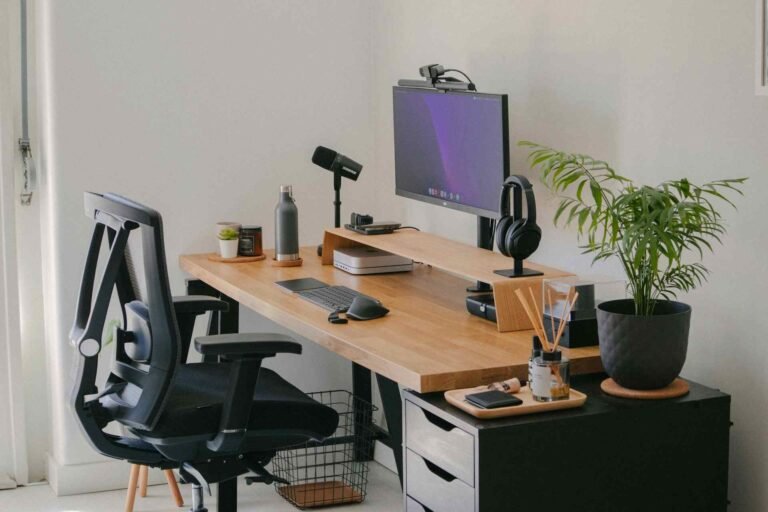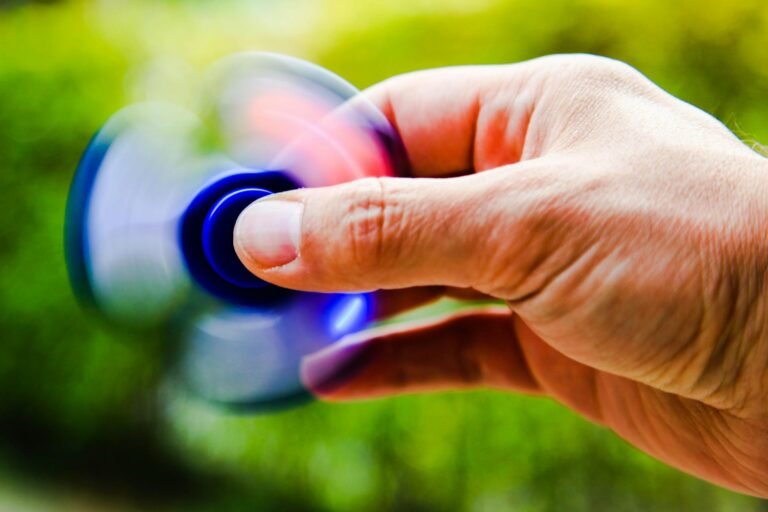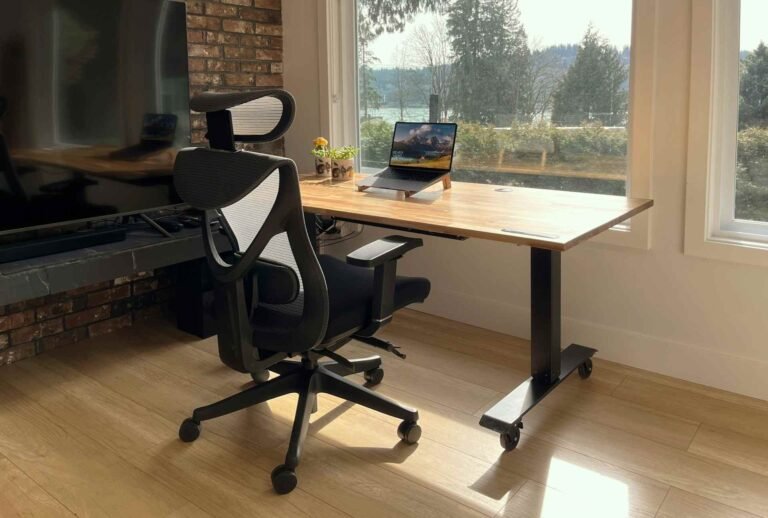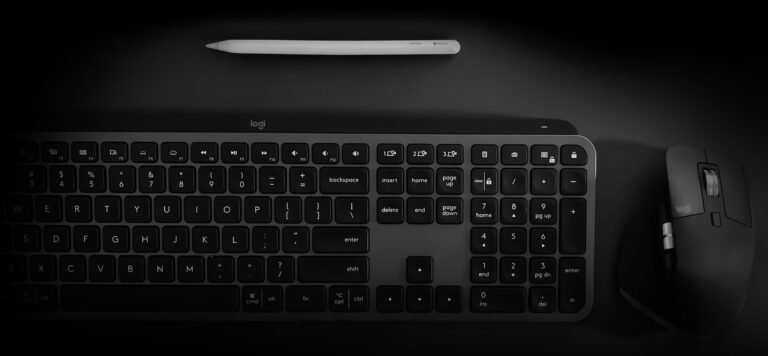White Noise and Work Productivity: Does It Actually Help You Focus Better?
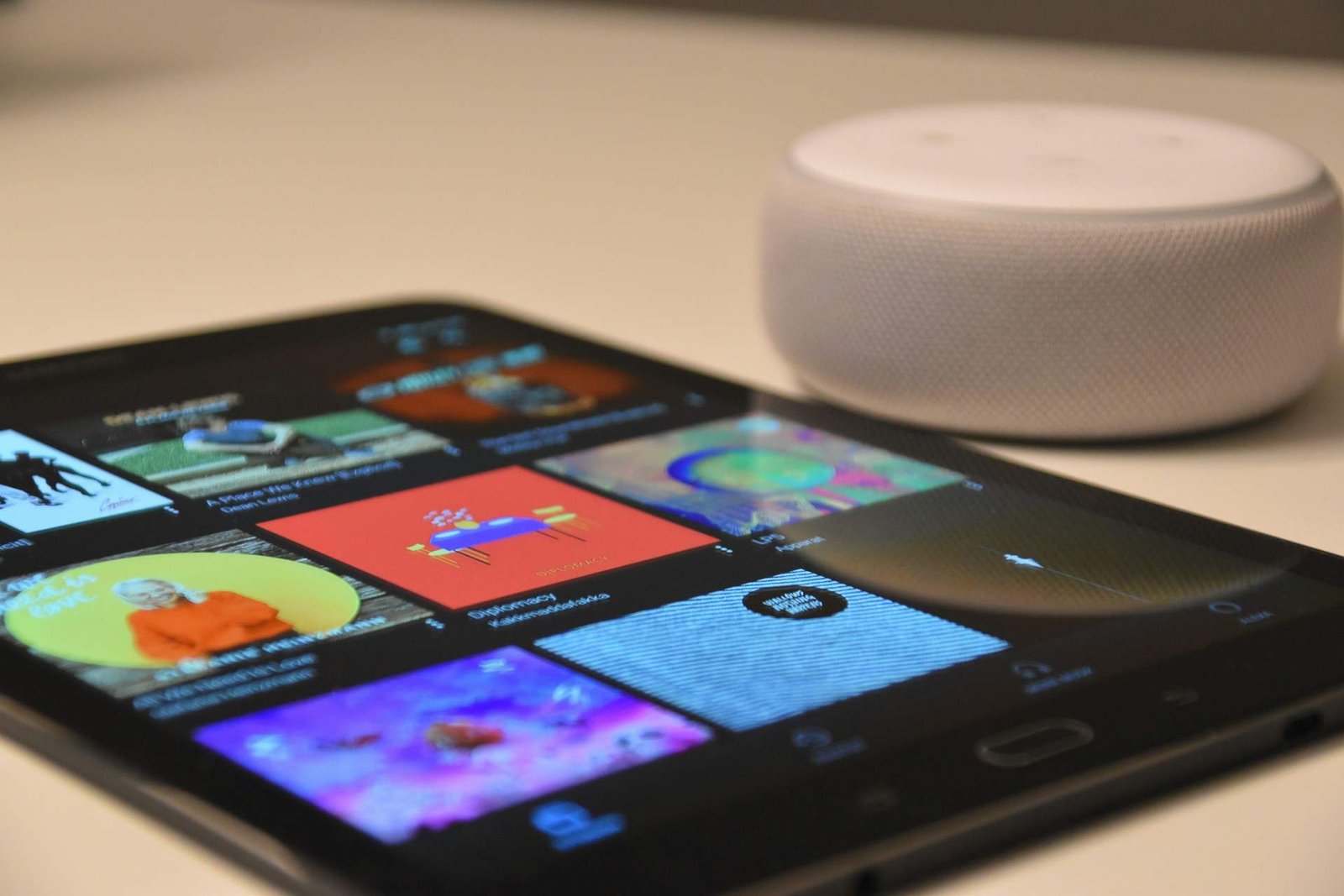
Ever found yourself in the middle of a crucial task when suddenly your coworker’s keyboard starts sounding like a tap-dancing convention? Or maybe the neighboring office’s impromptu brainstorming session is making it impossible to think? We’ve all been there, staring at our screens while our concentration slowly leaks away like air from a balloon.
That’s where white noise enters the picture. You’ve probably heard about it, maybe even tried it, but does white noise actually work for improving focus and getting things done? Let’s dive into this surprisingly controversial topic and figure out whether this sonic solution deserves a spot in your productivity toolkit.
What Exactly Is White Noise (And Why Does It Sound Like That)?
Before we tackle whether white noise can supercharge your work sessions, we should probably figure out what we’re dealing with here. White noise is essentially a consistent sound that contains all audible frequencies at equal intensity. Think of it like the audio equivalent of white light, which contains all colors of the visible spectrum mixed together.
In practice, white noise sounds similar to static on an old television or radio, a steady rainfall, or the gentle hum of an air conditioner. It creates a sonic blanket that masks other sounds rather than adding to the noise pollution around you. The beauty of white noise lies in its predictability. Your brain doesn’t need to process sudden changes or unexpected sounds, which means fewer distractions pulling your attention away from what matters.
Some people confuse white noise with its cousins, brown noise and pink noise. While they’re all part of the same family, each has slightly different characteristics. Brown noise has more emphasis on lower frequencies and sounds deeper, almost like a rumbling waterfall. Pink noise sits somewhere in between and resembles steady rain or wind rustling through leaves. For work purposes, many find white noise most effective, though personal preference plays a huge role.
White Noise for Work Focus
The relationship between white noise and concentration isn’t just folk wisdom passed around coffee machines. Research suggests that white noise can genuinely improve cognitive performance for certain people in specific situations.
The mechanism is actually pretty straightforward. Our brains are constantly scanning the environment for potential threats or important information. When you’re working in a quiet space and someone suddenly drops a stapler three desks over, your brain immediately redirects attention to assess that sound. Even if you consciously ignore it, your cognitive resources have already been diverted.
White noise works by creating a consistent auditory backdrop that masks these unpredictable sounds. Instead of your brain needing to process every little noise variation, it can essentially tune out the steady white noise and focus on the task at hand. It’s like giving your brain permission to stop being the neighborhood watch captain and actually get some work done.
Studies have shown that white noise can be particularly beneficial for people with attention difficulties. The constant background sound may help regulate brain activity and improve focus. However, and this is crucial, white noise doesn’t work the same way for everyone. Some people find it incredibly helpful, while others find it just as distracting as the sounds it’s meant to mask.
The effectiveness of white noise for work concentration also depends heavily on the type of work you’re doing. Tasks requiring deep focus and minimal external input tend to benefit most. If you’re writing a report, analyzing data, or working through complex problem-solving, white noise might be your new best friend.
Finding Your Perfect Sound: Not All White Noise Is Created Equal
Here’s something that might surprise you: the quality and type of white noise you use matters significantly. Not all white noise sounds the same, and finding the right match for your ears can be the difference between increased focus and increased frustration.
Traditional white noise machines using real fans create a more organic sound compared to digital recordings. There’s something about the natural variation in fan-generated white noise that many people find more soothing and easier to tune out. Fan-based sound machines produce authentic white noise without the potential loop fatigue that comes from digital tracks.
Digital white noise, on the other hand, offers more variety and customization. Many apps and devices provide not just white noise but also pink noise, brown noise, and nature sounds like rain or ocean waves. This variety lets you experiment and find what works best for your particular brain. Some people swear by white noise, others prefer the deeper rumble of brown noise, and still others find rain sounds most effective.
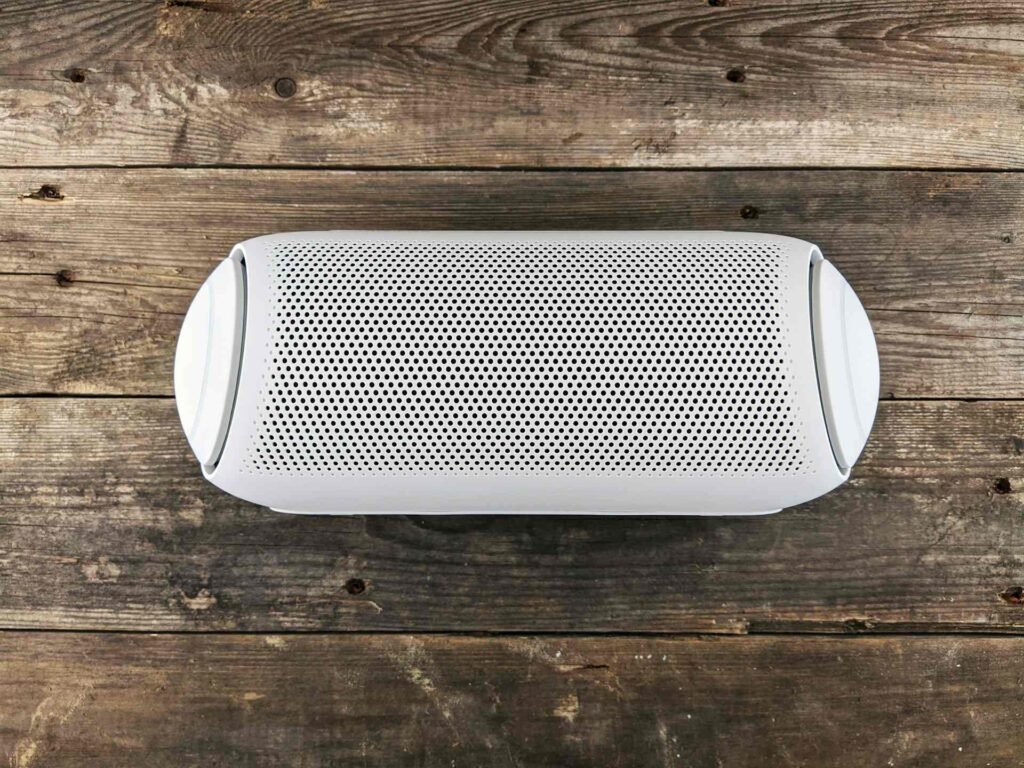
Sound quality matters more than you might think. Low-quality speakers or cheap headphones can make white noise sound harsh and irritating rather than soothing. If you’re serious about using white noise for productivity, investing in a decent white noise device with quality speakers makes a real difference in the listening experience.
Volume is another crucial factor. White noise should be loud enough to mask distracting sounds but not so loud that it becomes distracting itself. A good rule of thumb is to set it just loud enough that you notice when it turns off, but not so loud that you’re consciously aware of it while working. Most white noise machines with adjustable volume let you fine-tune this balance.
Does White Noise Actually Work for Everyone?
Let’s address the elephant in the room, or rather, the static in your headphones. White noise isn’t some magical productivity potion that works for absolutely everyone. In fact, whether white noise helps or hinders your focus seems to depend on several factors, including your natural cognitive style, the environment you’re working in, and the specific tasks you’re tackling.
Some research indicates that people who typically struggle with attention and focus in noisy environments tend to benefit most from white noise. If you’re someone who gets easily distracted by background conversations or ambient office sounds, introducing white noise might level the playing field. It creates a more consistent sensory environment that’s easier for your brain to filter out.
Conversely, people who already work well in quiet environments might find white noise more annoying than helpful. If you’re the type who can concentrate in a library without any background sound, adding white noise could actually introduce an unnecessary distraction. Your brain is already good at managing a quiet environment, so why fix what isn’t broken?
There’s also the matter of individual sound sensitivity. Some people are naturally more sensitive to auditory input, and for them, any additional sound, even white noise, can feel overwhelming. If you find yourself getting headaches or feeling fatigued when listening to white noise, it’s probably not the right solution for you.
The work environment matters too. In a moderately noisy open office where unpredictable sounds constantly pop up, white noise can work wonders. But if you’re working from home in a relatively quiet space, you might not need it at all. Context is everything.
When White Noise for Work Focus Makes the Most Sense
Timing and situation matter tremendously when it comes to deploying white noise as a productivity strategy. Not every work scenario calls for that steady sonic hum, and knowing when to use it can make all the difference.
Open office environments are probably where white noise shines brightest. These spaces were designed with collaboration in mind, which is great for teamwork but terrible for concentration. When you’re surrounded by conversations, ringing phones, and the general buzz of human activity, a compact white noise machine can create a personal focus zone without requiring you to blast music through your headphones.
Remote work situations present another interesting use case. Home offices come with their own unique set of distractions. Maybe you’ve got construction happening next door, a barking dog down the street, or housemates who haven’t quite grasped that your home office isn’t a casual hangout spot. White noise can help mask these irregular interruptions and create a more consistent work environment.
Deep work sessions particularly benefit from white noise. If you’re tackling something that requires sustained attention and cognitive effort, like writing complex code, preparing detailed reports, or working through intricate design problems, white noise can help maintain that flow state. Just like how music can enhance productivity for some tasks, white noise serves a similar function for others.

However, white noise probably isn’t ideal for every work activity. Collaborative tasks where you need to hear and respond to colleagues clearly won’t work well with white noise running. Video calls and phone conversations definitely require you to turn it off. Creative brainstorming sessions where you want to remain open to external stimuli might also benefit from a quieter approach.
Is White Noise Bad for You? Addressing Health Concerns
Before you commit to making white noise your permanent work companion, let’s talk about potential downsides. The question “is white noise bad for you?” pops up frequently, and it deserves an honest answer.
The good news is that white noise, when used properly, isn’t harmful for most people. It’s not blasting your eardrums with dangerous sound levels or introducing harmful frequencies. The key phrase there is “when used properly.” Like most things in life, moderation and appropriate use matter.
Hearing health is probably the biggest concern, and it’s legitimate. If you’re cranking white noise up to ear-splitting volumes to drown out your environment, you could potentially damage your hearing over time. The general recommendation is to keep white noise at a comfortable level, typically around 50-60 decibels. That’s roughly the volume of a normal conversation or light rainfall.
Extended exposure to constant sound, even at moderate levels, might contribute to listening fatigue for some people. Your ears and brain need breaks. Taking periodic breaks from white noise during your workday, similar to how you should take breaks from staring at your screen, can help prevent this fatigue.
Related Article: Best Computer Monitor Backlight LED Strips for 2025
There’s also the potential for dependency. Some people become so accustomed to working with white noise that they struggle to concentrate without it. This isn’t necessarily harmful, but it can be inconvenient when you find yourself in situations where you can’t use it. Building flexibility into your focus strategies helps prevent this single-point-of-failure scenario.
For most people wondering “is white noise good for you?”, the answer is nuanced. It can be beneficial for productivity and focus without causing harm, provided you use it sensibly. Keep the volume reasonable, take breaks, and pay attention to how your body responds.
Setting Up Your White Noise System for Maximum Productivity
Getting the technical setup right can make or break your white noise experience. Let’s walk through how to actually implement this in your workspace effectively.
First, decide on your delivery method. Do you want a dedicated white noise machine, a smartphone app, or computer-based software? Each has advantages. Standalone white noise devices don’t drain your phone battery or require screen time to adjust settings. They’re also typically built specifically for this purpose, with better sound quality than phone speakers.
Apps offer incredible convenience and variety. Most are free or inexpensive and let you customize sounds, set timers, and adjust volume easily. The downside is phone dependency and potentially lower audio quality. If you go this route, consider using external speakers or decent headphones to improve the sound.
Placement matters more than people realize. If you’re using a plug-in white noise machine, position it strategically. For masking ambient office noise, place it between you and the primary noise source. In an open office, this might mean positioning it facing the general direction of foot traffic or conversation areas.
For headphone users, comfort becomes paramount. You’ll potentially be wearing these for hours, so invest in comfortable headphones or earbuds that don’t cause ear fatigue. Over-ear headphones generally provide better comfort for extended wear, while earbuds offer more portability.
Consider your power needs too. Corded devices provide consistent power without battery worries, perfect for static desk setups. For flexible workspaces or those who move around, battery-powered or USB-powered options offer more versatility.
Complementary Tools: Pairing White Noise with Other Productivity Boosters
White noise rarely works in isolation. The most effective productivity setups combine multiple elements that work together synergistically. Think of white noise as one instrument in your productivity orchestra, not the entire symphony.
Lighting plays a surprisingly important role in focus and energy levels. Proper desk lighting combined with white noise creates a more complete focus environment. The right lighting reduces eye strain and helps regulate your circadian rhythm, while white noise handles the auditory distractions. Together, they create a workspace that supports concentration from multiple angles.
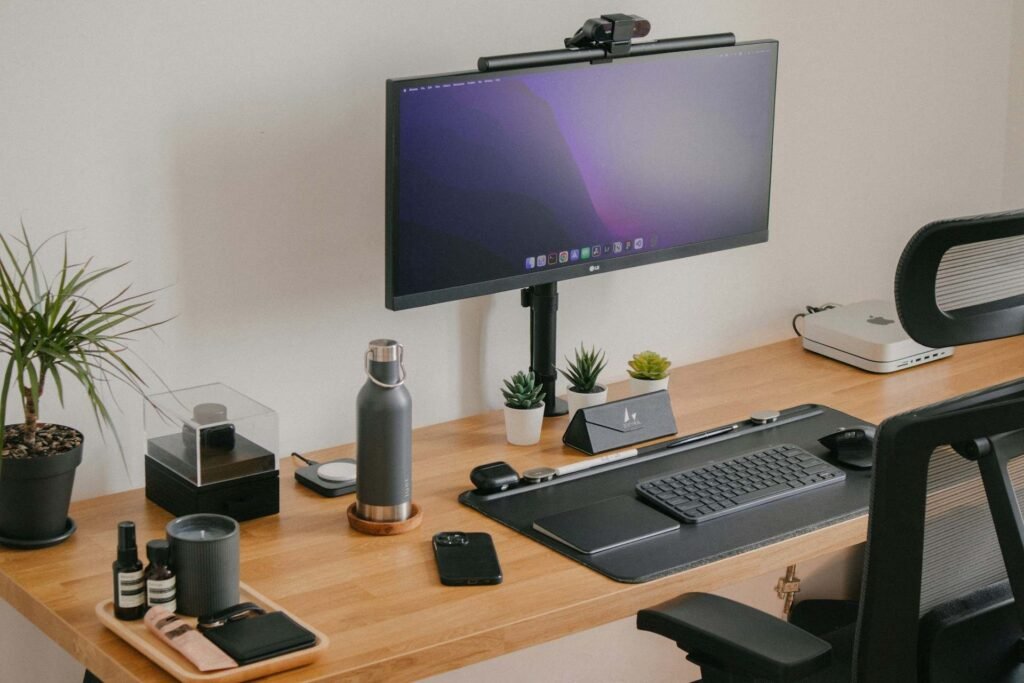
Ergonomic considerations matter too. You can have the perfect auditory environment, but if you’re physically uncomfortable, focus becomes impossible. Many people overlook the connection between physical comfort and mental focus. Supportive accessories like footrests and wrist rests can make extended work sessions more sustainable, letting you maintain concentration longer.
Temperature control represents another often-forgotten productivity factor. Your brain functions differently at various temperatures, and finding your optimal range helps maximize the benefits of tools like white noise. Some people focus best in slightly cooler environments, others prefer warmth. Experiment to find your sweet spot.
Taking strategic breaks complements white noise usage perfectly. The Pomodoro Technique or similar time-management approaches pair well with white noise sessions. Work for focused intervals with white noise on, then take breaks where you step away and give your ears a rest. This rhythm prevents both auditory fatigue and mental burnout.
Physical movement breaks are equally important. Standing desk users or those incorporating balance boards into their routine find that combining physical variation with consistent auditory environments enhances overall productivity. Movement refreshes your body while white noise maintains your focus bubble.
FAQ
Does white noise actually work for improving focus?
White noise can genuinely improve focus for many people, particularly those working in distracting environments or who have attention difficulties. It works by masking unpredictable background sounds that would otherwise pull your attention away from tasks. However, effectiveness varies significantly between individuals. Some people experience dramatic improvements in concentration, while others find it distracting or unnecessary. The best way to know if it works for you is to experiment with it during different types of work tasks and in various environments.
How loud should white noise be for work?
White noise should be set at a moderate volume, typically around 50-60 decibels, which is comparable to a normal conversation or light rain. It should be loud enough to mask distracting background noises but not so loud that you’re consciously focused on the white noise itself or straining to hear important sounds like alarms or colleagues trying to get your attention. If you need to significantly raise your voice to be heard over your white noise, it’s definitely too loud and could potentially damage your hearing with extended exposure.
Can you use white noise all day while working?
While you can technically use white noise throughout your workday, taking periodic breaks is advisable. Extended exposure to any constant sound can lead to listening fatigue, even at safe volumes. Consider using white noise during focused work sessions and turning it off during breaks, meetings, or collaborative work. This approach gives your auditory system a rest while still providing the benefits during tasks that require deep concentration. Listen to your body too. If you notice headaches, ear discomfort, or increased irritability, reduce your usage.
Is white noise better than music for concentration?
Whether white noise or music works better depends entirely on the person and the task. White noise tends to be less stimulating and creates a more neutral background, making it ideal for tasks requiring intense focus or verbal processing. Music can boost motivation and mood but might compete for cognitive resources during complex tasks, especially those involving language or creativity. Some people find instrumental music strikes a nice balance. Experiment with both to see which supports your specific work style and task requirements best.
What’s the difference between white noise and pink noise for work?
White noise contains all frequencies at equal intensity and sounds like static or a hissing waterfall. Pink noise emphasizes lower frequencies more and sounds softer and deeper, similar to steady rainfall or rustling leaves. Some people find pink noise less harsh and more soothing for extended listening. For work concentration, both can be effective, though some research suggests pink noise might be slightly better for sleep quality and possibly memory consolidation. Try both to see which your brain prefers for maintaining focus during different types of work.
Making White Noise Work for Your Unique Brain
Look, we’ve covered a lot of ground here, from the science behind white noise to practical setup tips, but here’s the real takeaway: your brain is wonderfully unique, and what works for someone else might not work for you. That’s not a failure, it’s just biology being interesting.
The only way to know whether white noise will boost your productivity is to actually try it. Start with a free app during a few work sessions. Pay attention not just to whether you subjectively feel more focused, but whether you actually get more done. Measure results in completed tasks, not just feelings. Sometimes we think something is helping when the data tells a different story.
If basic white noise doesn’t resonate with you, don’t give up on the concept entirely. Try pink noise, brown noise, or nature sounds. Adjust the volume up and down. Test different times of day. Pair it with other productivity strategies. Finding your perfect focus formula often requires some experimentation and tweaking.
Remember that white noise is a tool, not a magic spell. It works best as part of a broader productivity system that includes good work habits, proper breaks, comfortable workspace setup, and realistic task management. Think of it as one ingredient in your productivity recipe, not the entire meal.
And hey, if after trying it you discover that white noise just makes you want to run screaming from your desk, that’s totally valid too. Maybe your brain works better with carefully curated playlists, complete silence, or the ambient sounds of a busy coffee shop. The goal isn’t to force white noise to work for you; it’s to discover what actually helps you do your best work, whatever that might be.
Looking for more? Check out our productivity tools category for more articles and guides that may interest you!
Featured image credit: Photo by Waldemar Brandt on Unsplash
This content is for informational purposes only. Please verify current information directly on the retailer’s site before purchasing.
References:
Elza Othman, Ahmad Nazlim Yusoff, Mazlyfarina Mohamad, Hanani Abdul Manan, Vincent Giampietro, Aini Ismafairus Abd Hamid, Mariam Adawiah Dzulkifli, Syazarina Sharis Osman, Wan Ilma Dewiputri Wan Burhanuddin, Low intensity white noise improves performance in auditory working memory task: An fMRI study, Heliyon, Volume 5, Issue 9, 2019, e02444, ISSN 2405-8440, https://doi.org/10.1016/j.heliyon.2019.e02444
Ghasemi S, Fasih-Ramandi F, Monazzam MR, Khodakarim S. White Noise and Its Potential Applications in Occupational Health: A Review. Iran J Public Health. 2023 Mar;52(3):488-499. https://doi.org/10.18502/ijph.v52i3.12132


